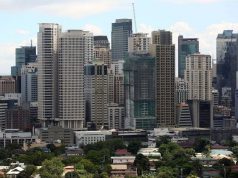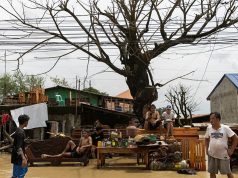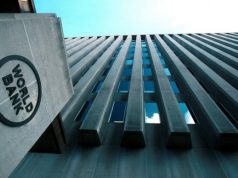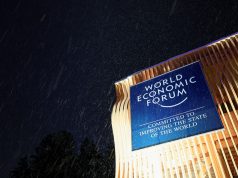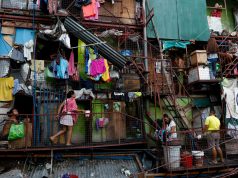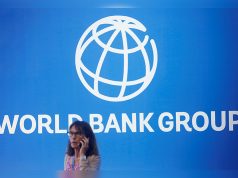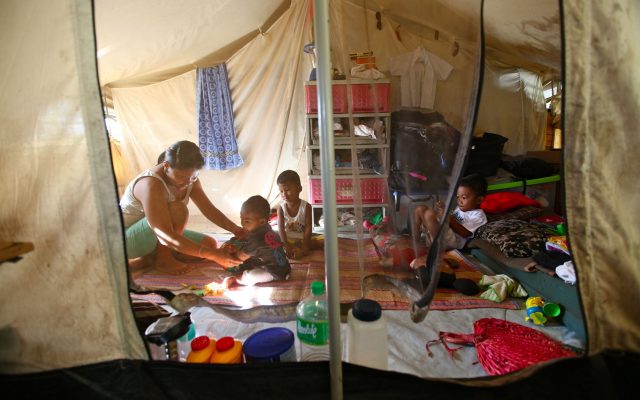
MANILA, Philippines — The Philippines, along with the rest of East Asia and the Pacific, has lifted numerous households from poverty over the past two decades. But beyond this, it must ensure its citizens are able to improve their situation in life (upward economic mobility) and are able to hold on to the gains they have made (economic security).
This is the World Bank’s position in its recently released study, “Riding the Wave: An East Asian Miracle for the 21st Century.”
In the Philippines, over five percent of citizens live on less than $1.90 a day as of 2015, making them part of the “extreme poor.” In that year, the nation also accounted for 13.8 percent of the region’s extreme poor.
Nevertheless, the Philippines has been lumped with Cambodia and Indonesia among the “out-of-extreme-poverty” countries — where extreme poverty levels are low, but so are the shares of the middle class (those living on more than $15 a day). A sizable share of the population is still either moderately poor (living on $1.90 to $3.10 a day), or vulnerable to falling back into poverty (living on $3.10 to $5.50 a day).
Like its neighbors, the Philippines is facing a “growing concentration of income and wealth at the top, as well as limited access to basic services, often of poor quality, even among the middle class.” Despite their economic security, the middle class cannot access high-quality public services in housing, water, and even modern sanitation.
Education is a particular challenge in the Philippines, said the World Bank.
And though the middle class benefit from social protection measures like health insurance and pensions that come with secure jobs, they are not immune to shocks.
“In the past couple of decades, different parts of the region have been affected by two major financial crises; several spikes in food prices; natural disasters ranging from earthquakes to tsunamis; and repeated hits by massive cyclones,” the report said.
With communities concentrated in low-lying coastal areas or hazardous urban neighborhoods, millions are exposed to severe consequences of natural shocks.
“In such areas, insecurity of tenure provides little incentive for households to invest in risk management, and poor provision of services such as health care compounds the effects of disasters such as flooding,” the report said.
Most households in the region also did not move upward through the economic classes, based on data from the early 2000s, and in all classes, there were people who moved downward due to their inability to cope with such shocks.
The World Bank also conducted research in Metro Manila slums to find out why people people living in extreme poverty cannot escape it.
“They reported difficulties in getting jobs, because they had arrived in the city from rural areas without any skills … They lived in poor-quality, makeshift housing or lacked housing altogether, and thus were exposed to crime, natural disasters, floods, dirt, and disease,” the report said.
They are “extremely vulnerable to shocks and have limited capacity to manage risk … (and) their lack of identity documents is a key barrier to escaping poverty. In the Philippines, those born to extreme poor families sometimes lack a birth certificate, which is needed to get a job, to receive government benefits, and to go to school, but the only way for them to get a birth certificate is to return to the town of their birth, which is not something that they can afford to do. Thus, they are stuck in the informal economy, often scavenging.”
In dealing with this, the World Bank recommended that “out-of-extreme-poverty” countries prioritize policies that “reflect the needs and aspirations of a diverse population, spanning those in moderate poverty, the vulnerable, and those who are economically secure.”
“Integrating existing social assistance programs to provide greater economic security is a key priority, with strengthening mobility a close second,” it said.
The report cited the Pantawid Pamilyang Pilipino Program (4Ps) as a targeted conditional cash transfer program that responds to the needs of poor families, particularly their children. It also noted that the Philippines is “one of the few large developing countries in the world with a complete, nationwide database of the poor that is used by a large number of social programs to target interventions,” referring to the Listahanan.
With data collected on about 11 million households from 2009 to 2010, 5.2 million households were identified as poor and were targeted for government assistance. The World Bank said the “remarkable instrument” has become the backbone of the country’s anti-poverty programs, such as the 4Ps, PhilHealth insurance, and social pension.
“It is also used by policymakers to plan disaster relief assistance, by civil society to monitor government effectiveness, and by academics. The Listahanan was updated in 2015 to cover 75 percent of the population (15.8 million households), and a new set of proxy means tested models was developed. Those revisions significantly reduced errors in mis-classifying poor and non-poor households.”
The World Bank enumerated the following recommendations, among others, to the region so that its citizens can face the challenges to inclusive growth:
- Address gaps in access to jobs and services by reducing barriers to female labor force participation and simplifying or eliminating regulations for obtaining identity documents that are needed to access services or government programs.
- Reduce regulatory barriers to rural-urban mobility, improve rural connectivity, and ease the process of formalization for micro and small enterprises.
- Promote financial inclusion by expanding financial literacy and by improving information flows needed to assess credit-worthiness.
- Improve targeting of cash transfer programs to population groups that remain over-represented among the extreme and moderate poor.
- Strengthen social insurance by expanding the coverage of measures to help households insure against risks and by expanding the revenue base to sustain the system’s expansion.
- Mobilize resources through progressive taxation by strengthening personal income taxation, including by broadening the tax base, reviewing marginal tax rates, and eliminating the preferential treatment of capital income; by establishing effective property taxes; and by enhancing tax administration.
- Level the playing field by boosting competition and by tackling nepotism and corruption.
- Promote efficient urbanization by supporting efficient land use in cities and by strengthening urban governance to improve service delivery and urban infrastructure, including by improving coordination between different levels of government and different jurisdictions.




